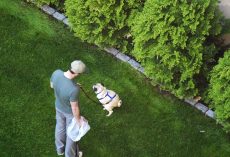According to Dr. Vivian Cardoso-Carroll, there is a difference between the natural changes that come with age, and the changes that occur when something is seriously wrong. Keep reading so you can learn the difference between the two:
Veterinarians are taught that “old age is not a disease,” and usually there are reasons the dog may “act old.” Here are a few:
– Suffering from some insidious organ dysfunction or issue that’s not making him overtly sick, just slowing him down
– Pain
– Loss of hearing
– Vision loss; It will affect their overall activity level sometimes tooOnly after I’ve ruled these out do I allow myself to conclude: “Yeah, he’s just old.”
So, for the older dog and cat set, I generally recommend an annual blood and urine panel to try to stay on top of those internal things that wear out.
If I suggest the dog could be in pain, clients seem to get defensive.
“Sure, he’s stopped jumping on the couch and he can’t make it around the block anymore, but he’s not in pain, he’s just getting old.”
In my mind, those statements are signs that maybe the dog is suffering from arthritis or another type of pain-related condition.
No matter how old he gets, your dog will always be your puppy. Make sure you're in tune to his behaviors so that you can identify when something seems off. Don't be too quick to dismiss something as a sign of “getting old,” because you never know when your attentiveness could help your vet identify a different cause for the behavioral change. To learn more about the pain symptoms in dogs, check out PetMD.









